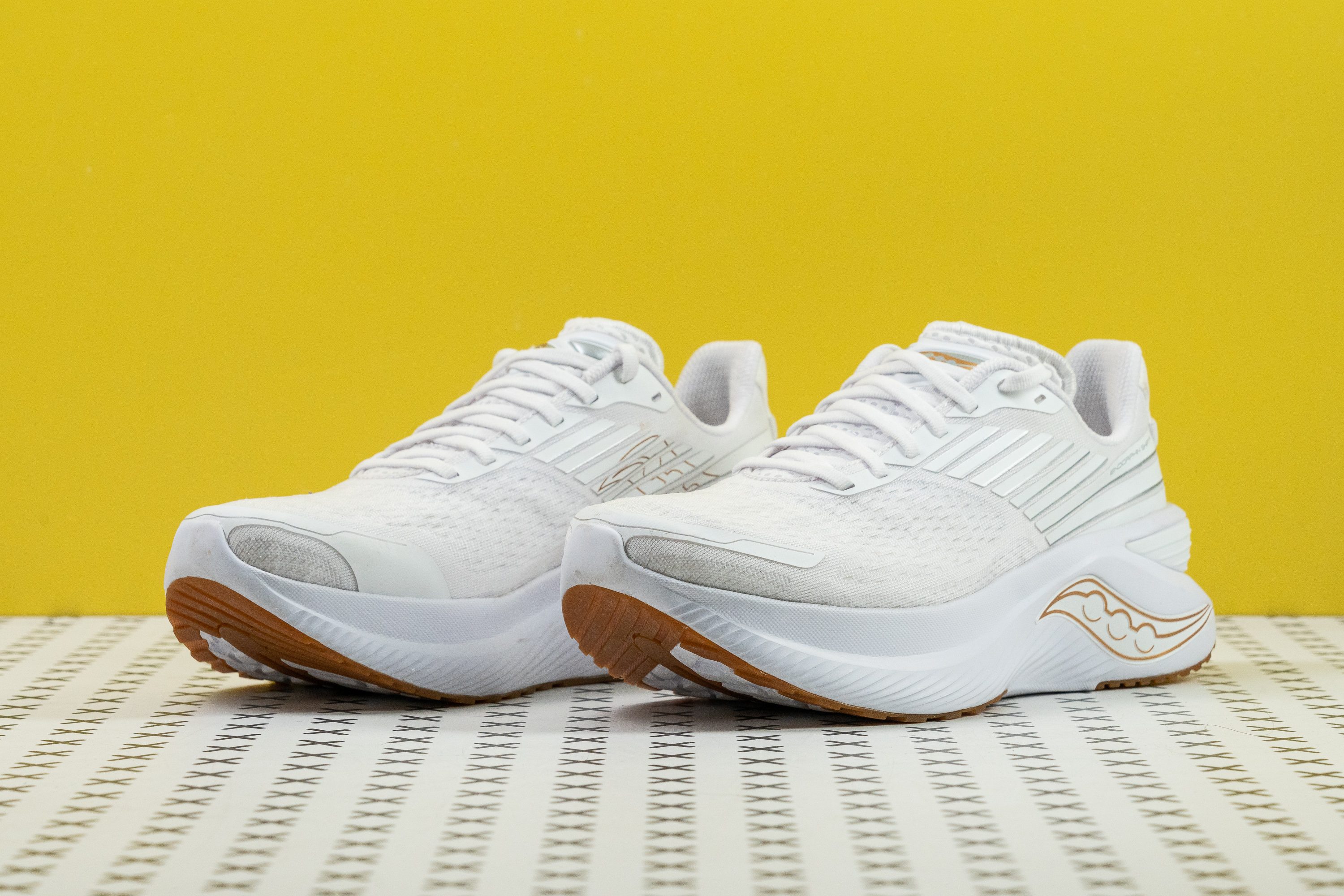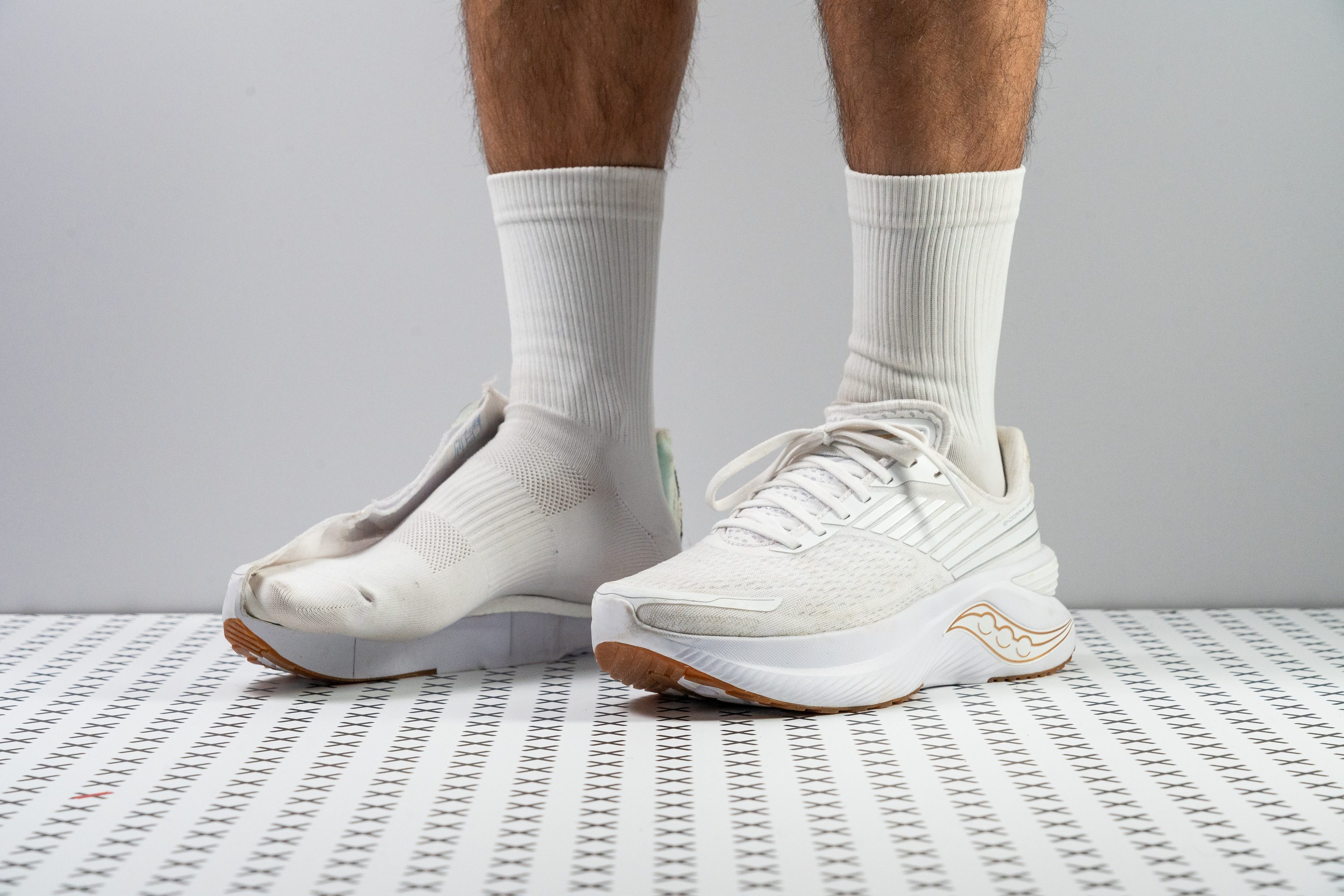Our verdict
- Top pick in best Saucony walking shoes
Pros
- Light for a maximal shoe
- Comfy and secure upper
- Softer than before
- Surprisingly stable
- Very versatile
- Protective underfoot
- Above average durability
- Doubles as a sneaker
Cons
- Very big
- Not for wide feet
Audience verdict
- Top 23% in Saucony running shoes
- Top 28% in running shoes for walking
Comparison
The most similar running shoes compared
+ + Add a shoe | |||||
|---|---|---|---|---|---|
| Audience score | 89 Great! | 89 Great! | 89 Great! | 89 Great! | |
| Price | $150 | $130 | $200 | $160 | |
| Pace | Daily running | Daily running | Daily running | Daily running | |
| Arch support | Neutral | Neutral | Neutral | Neutral | |
| Weight lab Weight brand | 9.6 oz / 272g 9.4 oz / 266g | 10.1 oz / 285g 9.8 oz / 277g | 10.8 oz / 305g 10.9 oz / 309g | 9.9 oz / 282g 10 oz / 283g | |
| Drop lab Drop brand | 6.5 mm 4.0 mm | 7.0 mm 6.0 mm | 6.6 mm 6.0 mm | 8.7 mm 5.0 mm | |
| Strike pattern | Mid/forefoot | HeelMid/forefoot | HeelMid/forefoot | HeelMid/forefoot | |
| Size | True to size | True to size | True to size | True to size | |
| Midsole softness | Balanced | Balanced | Soft | Soft | |
| Difference in midsole softness in cold | Normal | Normal | Small | Normal | |
| Toebox durability | - | Decent | Decent | Decent | |
| Heel padding durability | - | Decent | Good | Good | |
| Outsole durability | - | Bad | Decent | Good | |
| Breathability | Moderate | Moderate | Breathable | Breathable | |
| Width / fit | Narrow | Medium | Medium | Medium | |
| Toebox width | - | Medium | Medium | Narrow | |
| Stiffness | Stiff | Flexible | Flexible | Flexible | |
| Difference in stiffness in cold | Small | Small | Small | Normal | |
| Torsional rigidity | Moderate | Moderate | Stiff | Stiff | |
| Heel counter stiffness | Moderate | Moderate | Moderate | Stiff | |
| Rocker | ✓ | ✓ | ✓ | ✗ | |
| Heel lab Heel brand | 39.6 mm 39.0 mm | 36.8 mm 31.0 mm | 42.3 mm 47.0 mm | 39.3 mm 39.0 mm | |
| Forefoot lab Forefoot brand | 33.1 mm 35.0 mm | 29.8 mm 25.0 mm | 35.7 mm 41.0 mm | 30.6 mm 34.0 mm | |
| Widths available | NormalWide | Normal | Normal | NormalWide | |
| Orthotic friendly | ✓ | ✓ | ✓ | ✓ | |
| Season | All seasons | All seasons | SummerAll seasons | SummerAll seasons | |
| Removable insole | ✓ | ✓ | ✓ | ✓ | |
| Ranking | #111 Top 32% | #83 Top 24% | #102 Top 29% | #114 Top 32% | |
| Popularity | #172 Top 49% | #240 Bottom 32% | #11 Top 4% | #121 Top 34% |
Size and fit
Size
Saucony Endorphin Shift 3 fits true to size (55 votes).
Who should buy Saucony Endorphin Shift 3
Whether you are an entry-level or an advanced runner, we attest that you can really enjoy this neutral daily trainer, provided that you have medium-width feet and prefer maximal cushioning and big shoes. Its versatility makes it the only shoe you might need if most of your running is spent between easy and tempo runs.
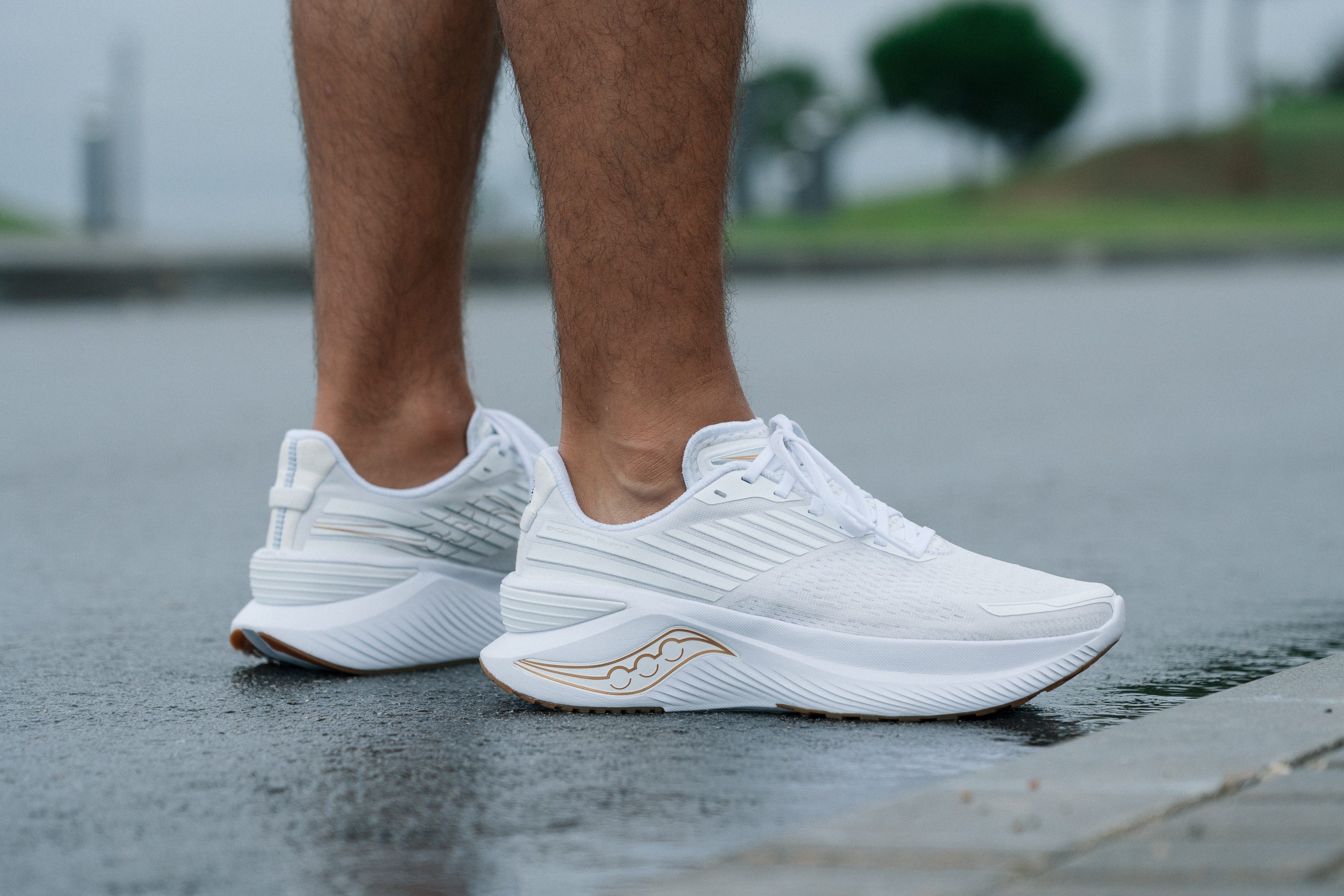
Who should NOT buy
Don’t get it if you love more ground feel and less cumbersome shoes. Try the Saucony Kinvara 13 instead. If you have wide feet, we recommend checking out the Saucony Ride 14, it’s a better choice in that case.
Saucony Endorphin Shift 3 vs. Shift 2
There have been some significant updates from the previous version of the Shift.
The Endorphin Shift 3 is 0.9oz (26g) lighter, softer underfoot, slightly more flexible, and has 2mm more cushioning.
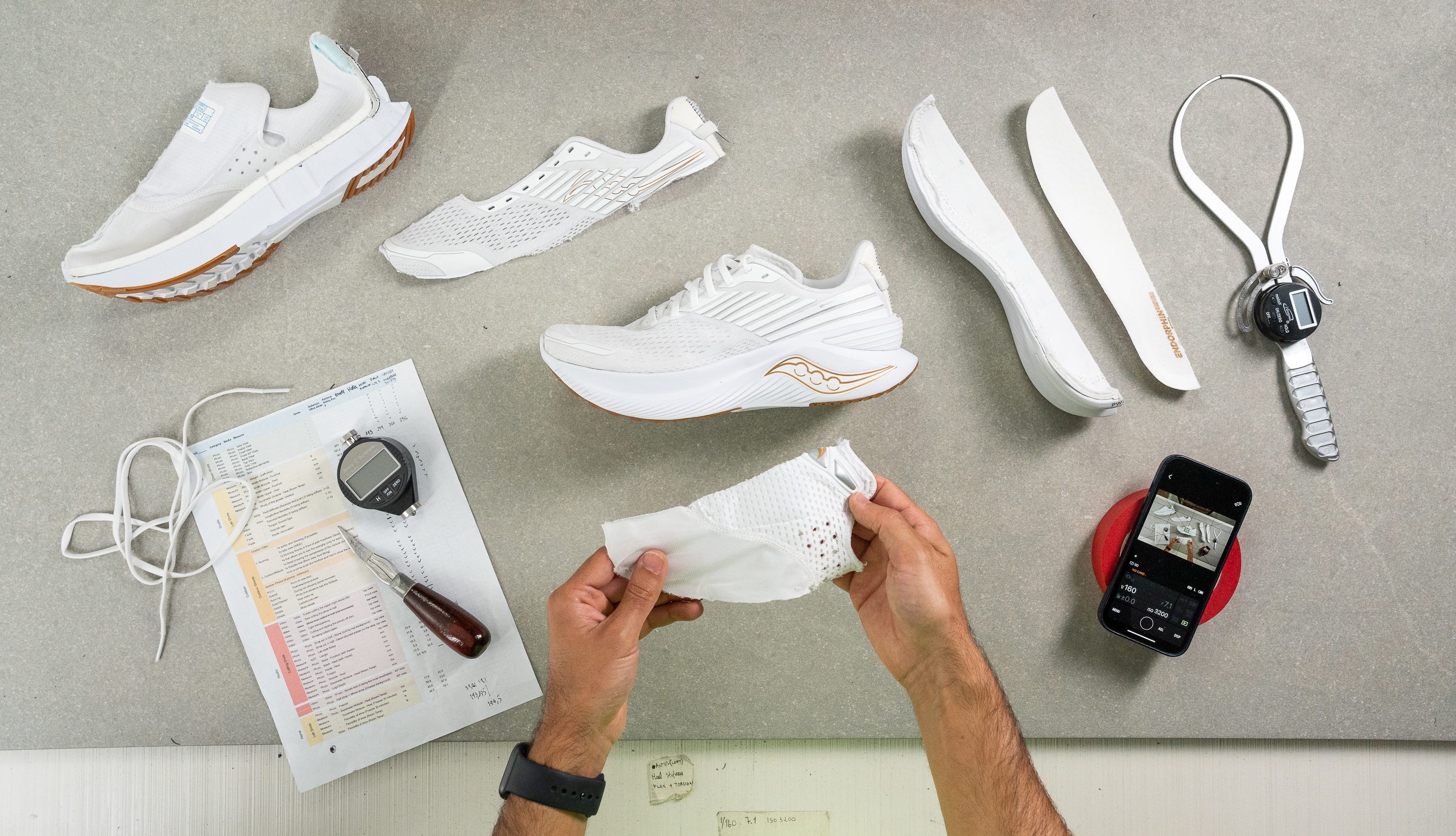
Airy, thin upper
The upper is very well designed in this Saucony shoe. We found that it balances plush in-shoe comfort with ventilatoin quite admirably.
Assessing its breathability with the help of a smoke-pumping machine, it is clear to see that the Shift 3 lets the air pass much more freely. Because of that, its breathability deserved a 4 out of 5 for breathability from us.
See how easily the light passes through the shoe's toebox. It appears as if the mesh is 100% transparent.
This Saucony shoe hugs your feet
Trying the shoe on, we found that it is most suitable for narrow and medium feet because of its slightly narrower configuration.
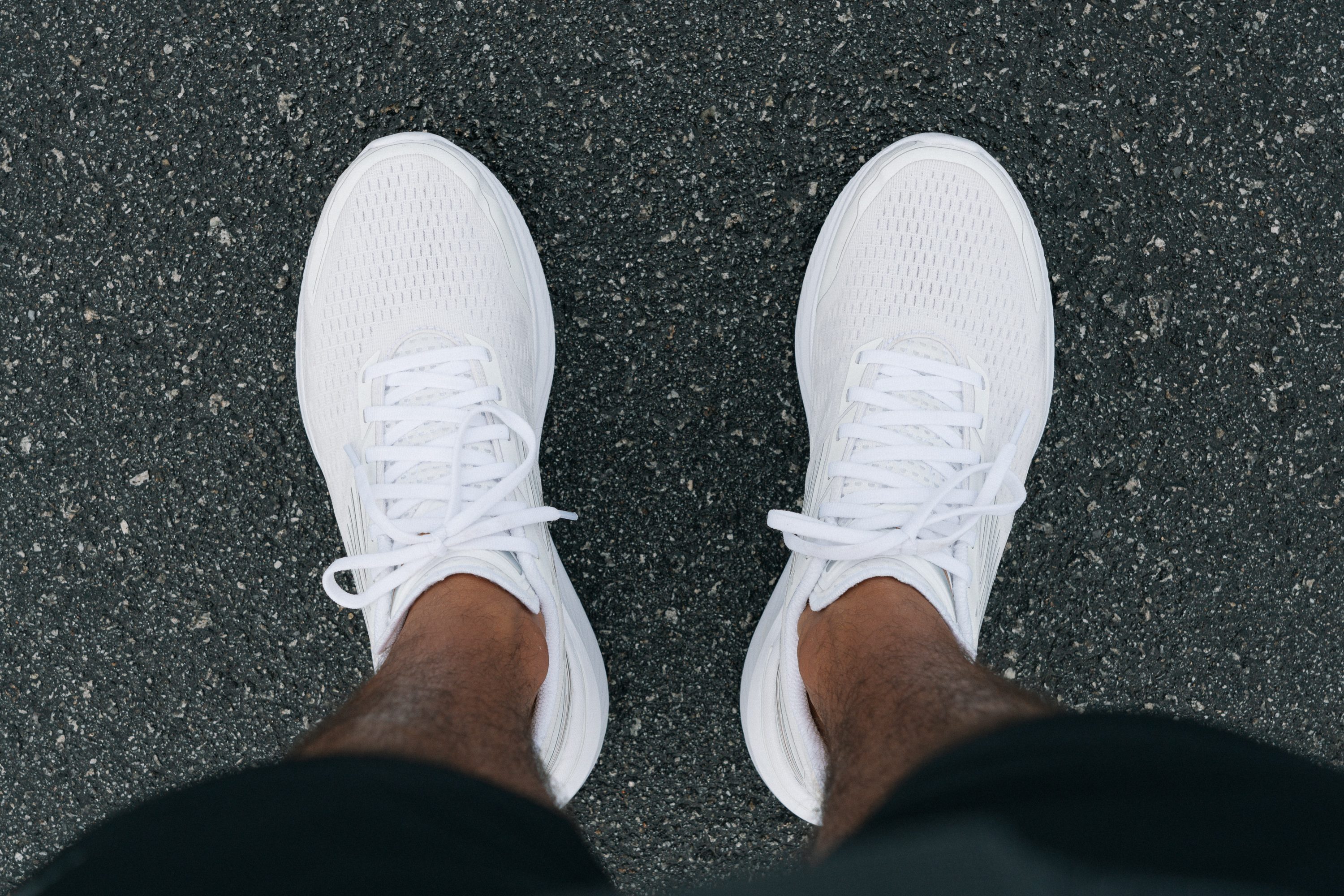
Based on our measurements, the shoe's toebox is 94.2 mm at its widest part which is 4 mm narrower than the average. So it cannot be referred to as wide-foot friendly.
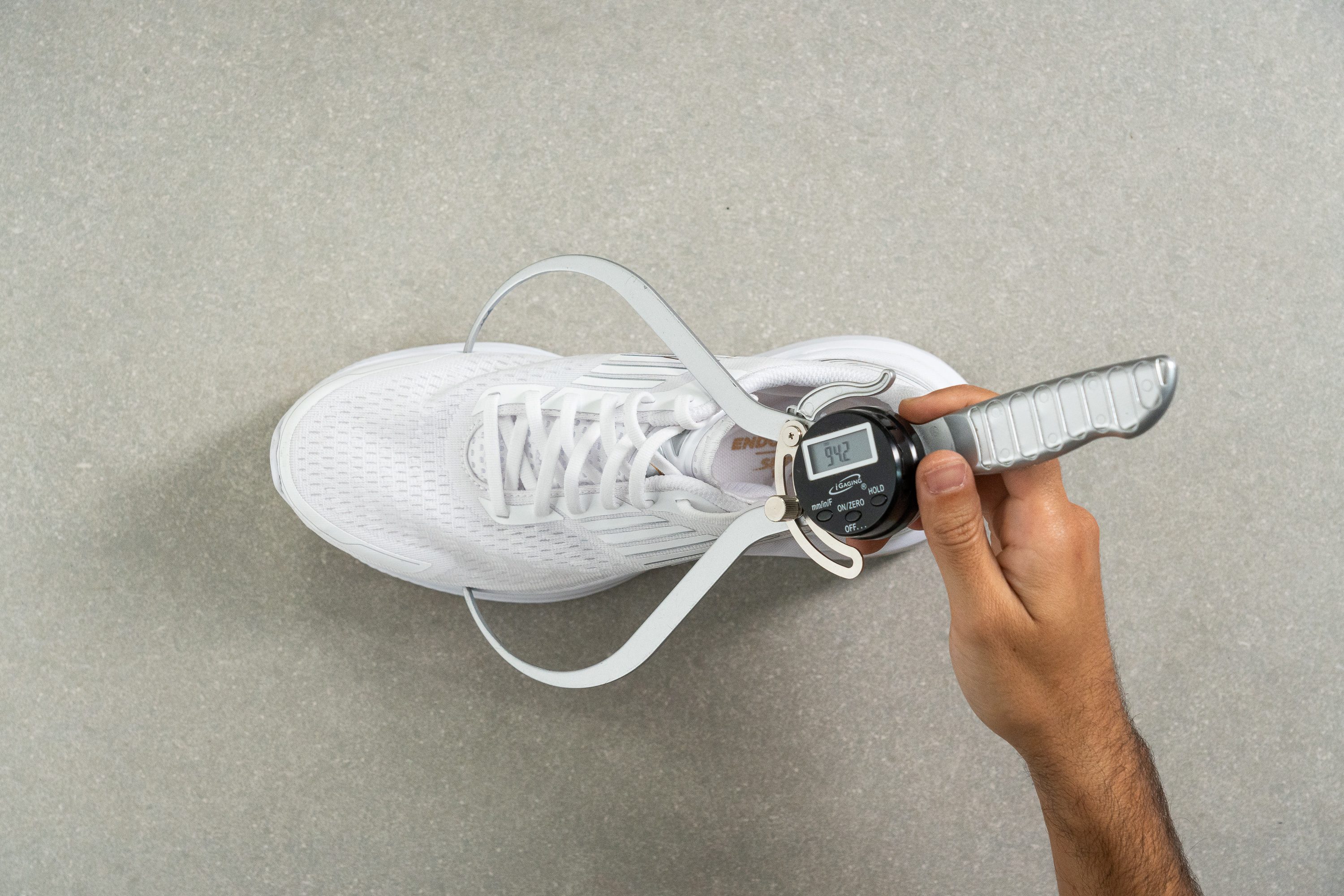
It also features a gusseted tongue which makes a positive impact on the locked-in fit.
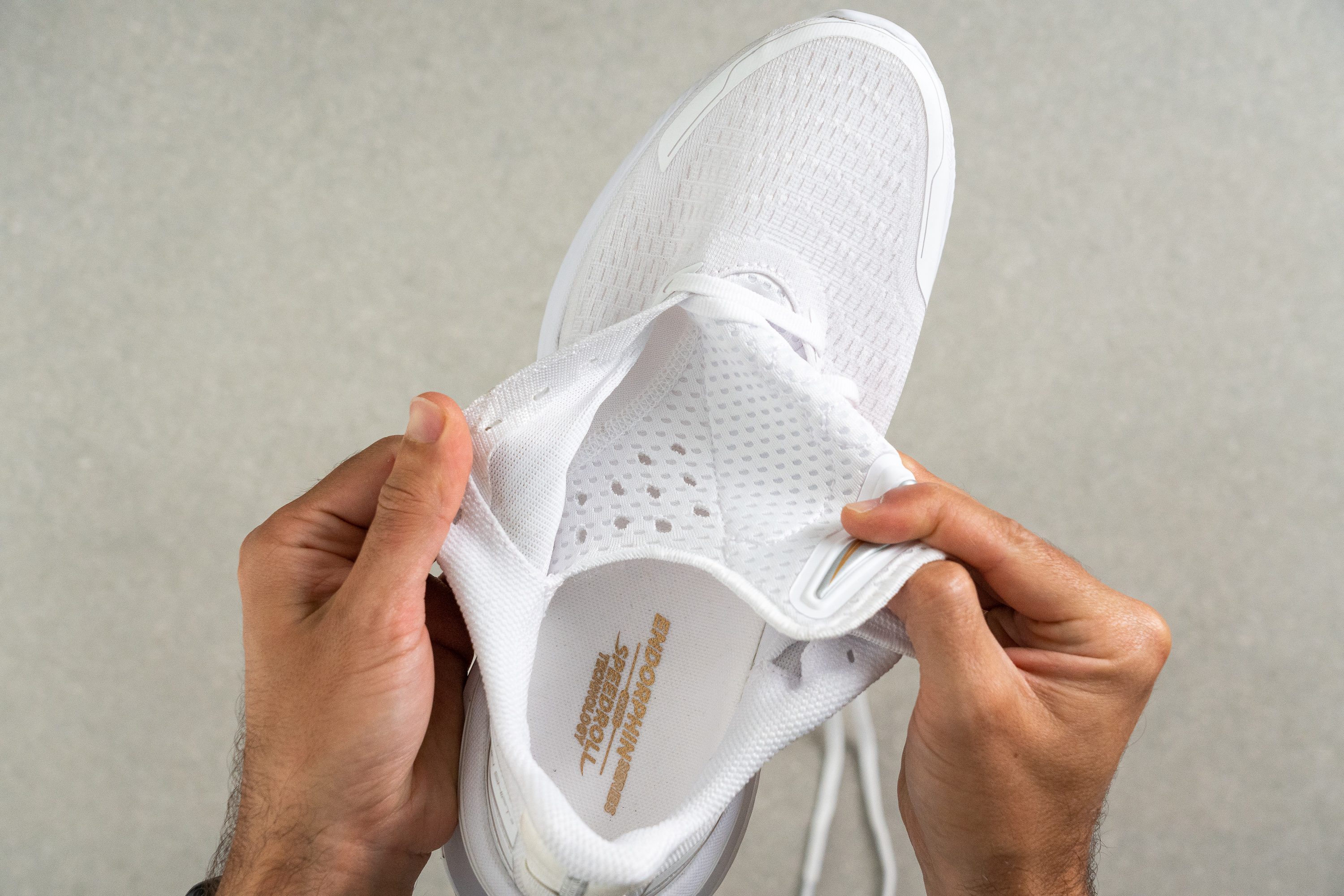
In addition, there is a moderately stiff heel counter that secures the ankle. We gave it 3/5 in our assessment. It gave us no issues with heel slippage.
Pushes you forward
The Endorphin Shift 3 has a highly rockered geometry that really helped to propel our feet on the run.
As a result, we experienced a forward-rolling sensation which helped us cruise through longer runs. We believe that the rolling sensation is in part provided by the shoe's stiff forefoot.
Measuring how much force it takes to bend the Shift 3 to a 90-degree angle (43.9N), we found it to be 30% stiffer than road running shoes on average.
This Endorphin can handle it all
With a massive stack and slightly soft cushioning, we found this shoe to be a gentle giant that’s perfect for slow-paced runs. We discovered that this Saucony shoe didn't feel at ease on faster paces like uptempo efforts.
Measuring the shoe's tack height in the heel, we got 39.6 mm which is about 6 mm taller than the average and makes it one of the thickest midsoles on our list.

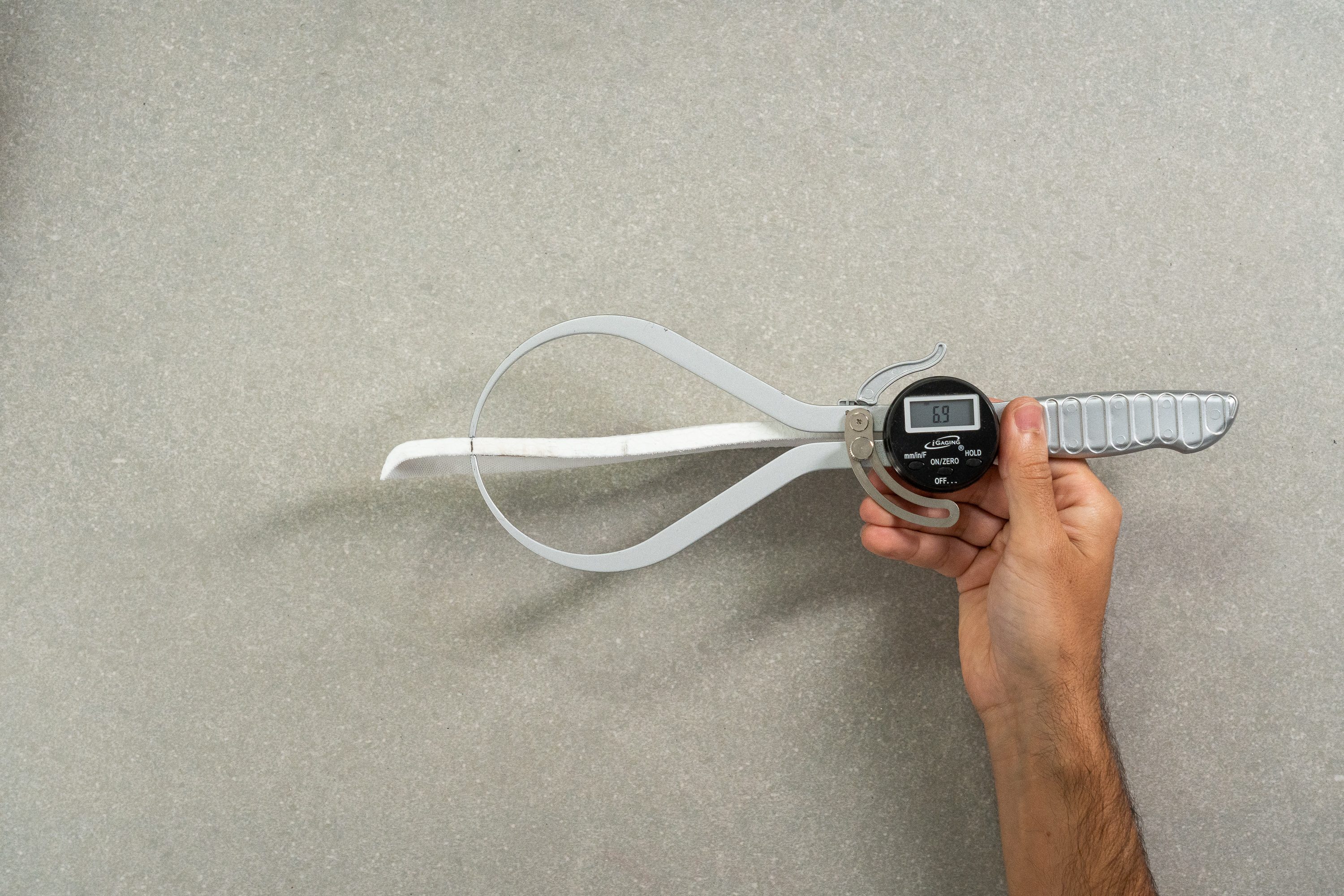
Turning to our durometer to check the midsole softness, we got a reading of 22.0 HA. This makes the Endorphin Shift 3 10% plusher than average.
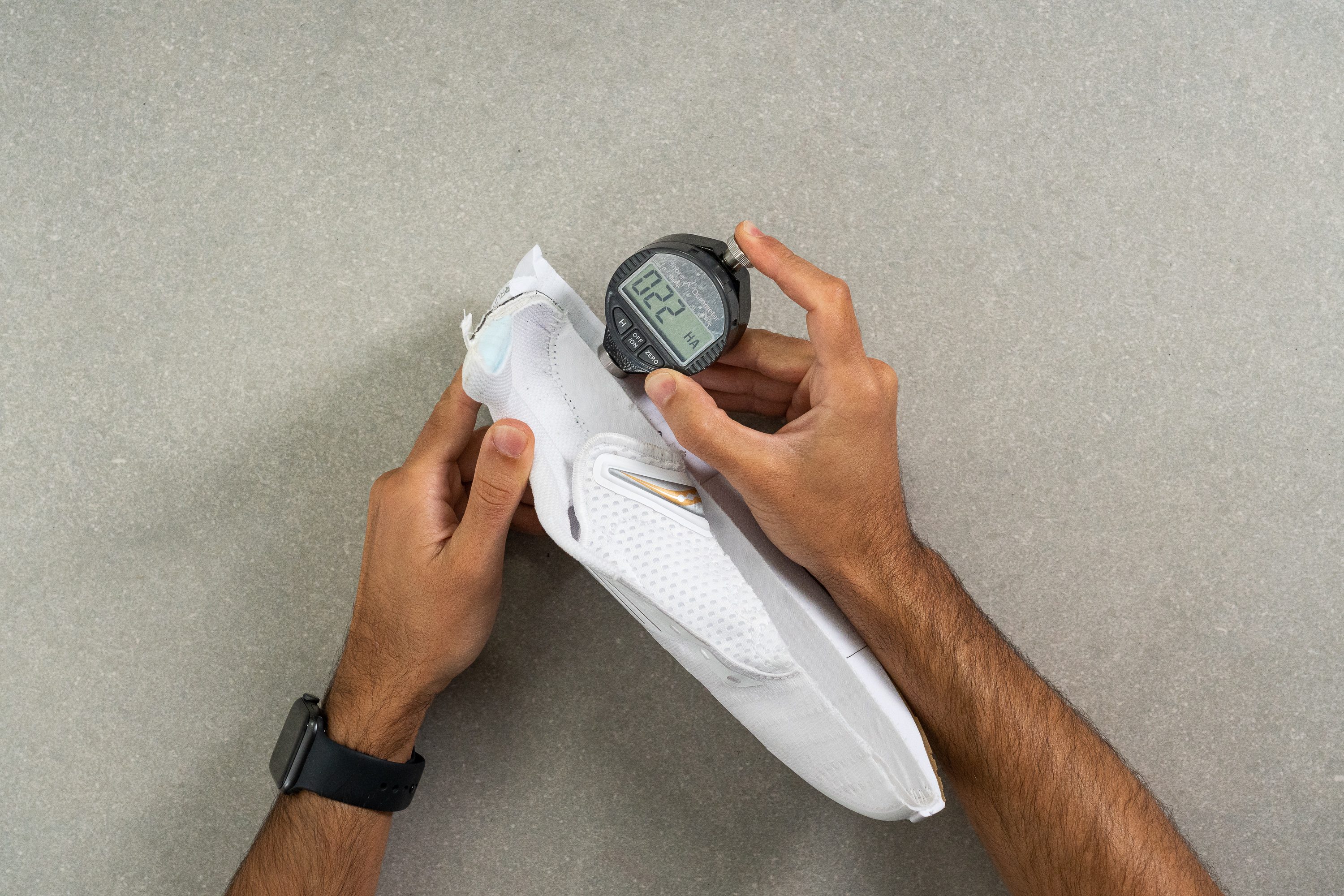
And if you are planning to take the Saucony Endorphin Shift 3 out on a chilly day, keep in mind that the foam will get a bit firmer and will require some breaking in. We kept the shoe in the freezer for 20 minutes and the cushion got 38.6% harder.
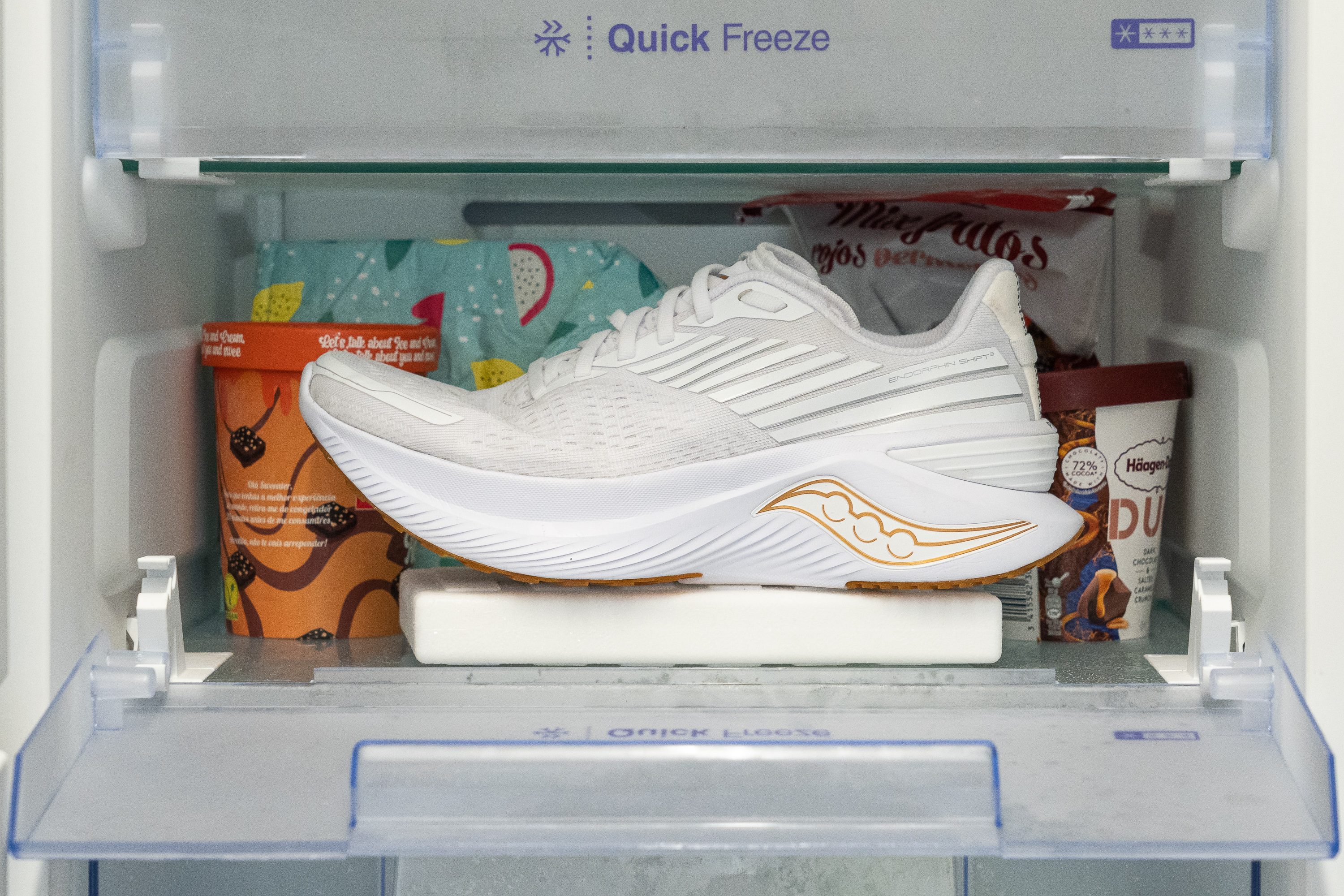
The usual, reliable traction
There is nothing fancy about the outsole of the Shift 3 but it gets the job done and provides a solid grip most of the time.
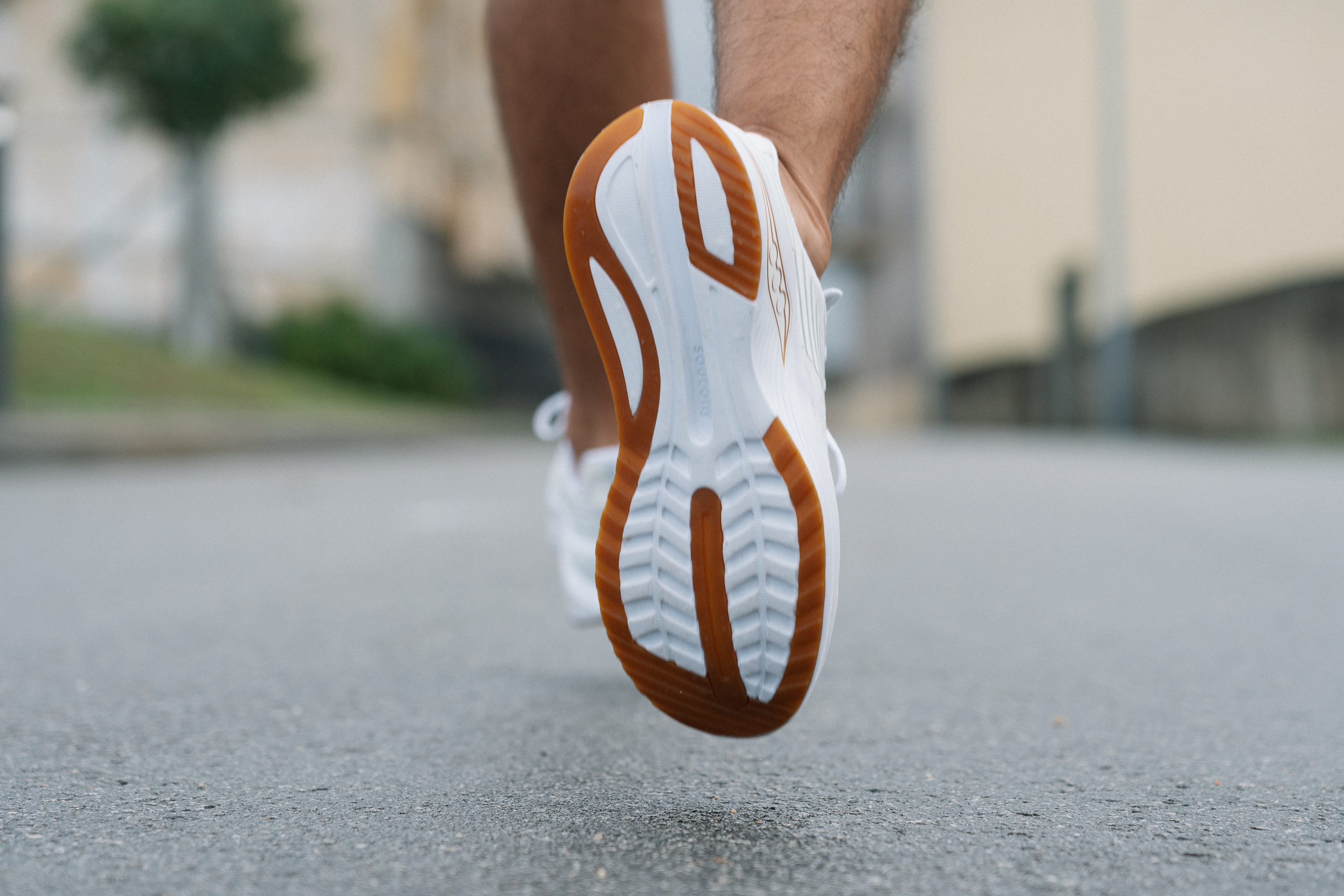
Feels light when running
Weighing 9.4 oz (266g) in a men's US size 9, the Shift 3 is close to the average weight of road running shoes (9.5 oz or 270g). However, out on the road, it does feel lighter than expected and it seems like the weight drop from version 2 makes it easier to turn the legs over.
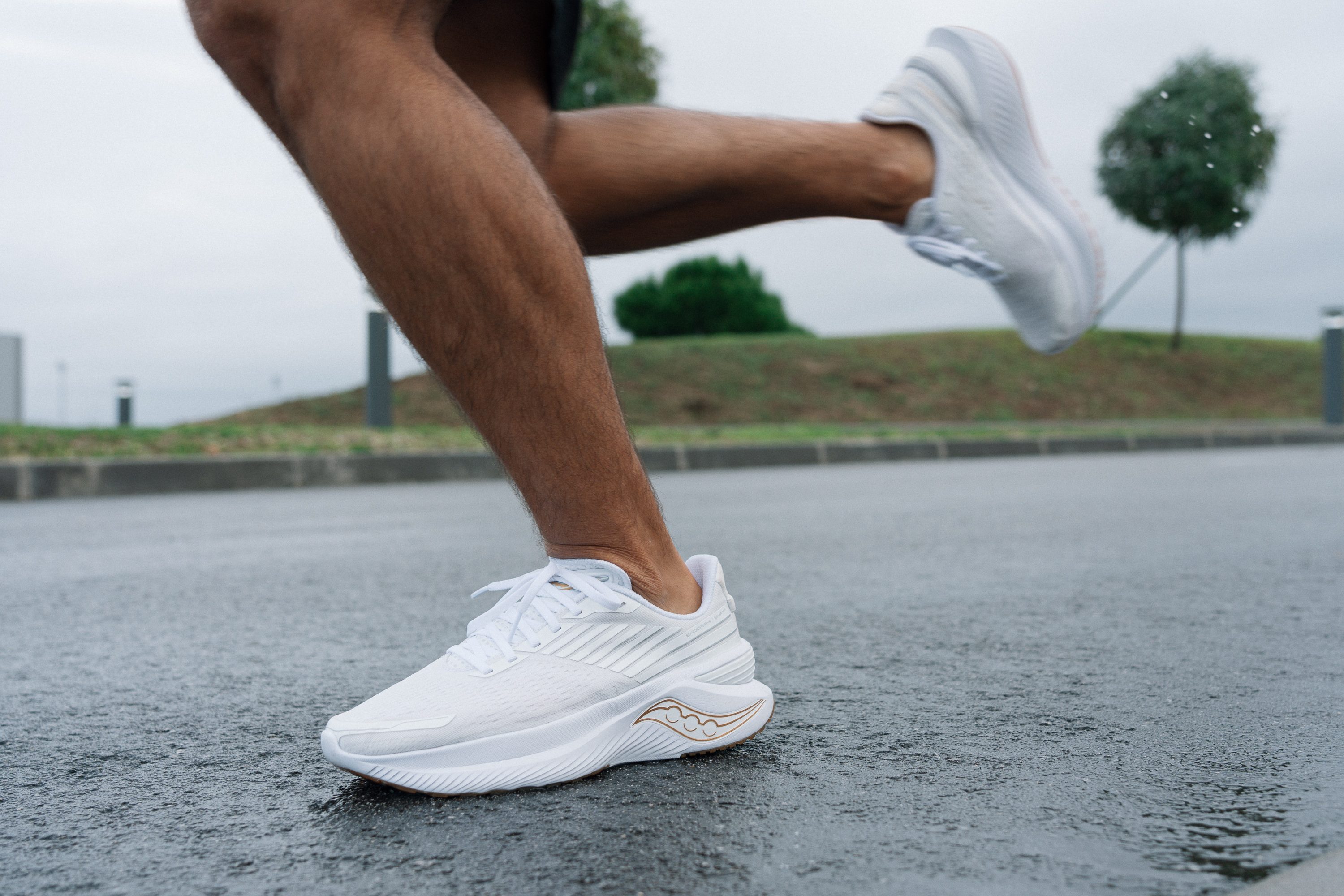
Saucony Endorphin Shift 3 is for every situation
The softer midsole, combined with a well-crafted upper, make the shoe ideal for casual wearing too. In fact, this Saucony shoe kept us comfortable even when worn all day long!
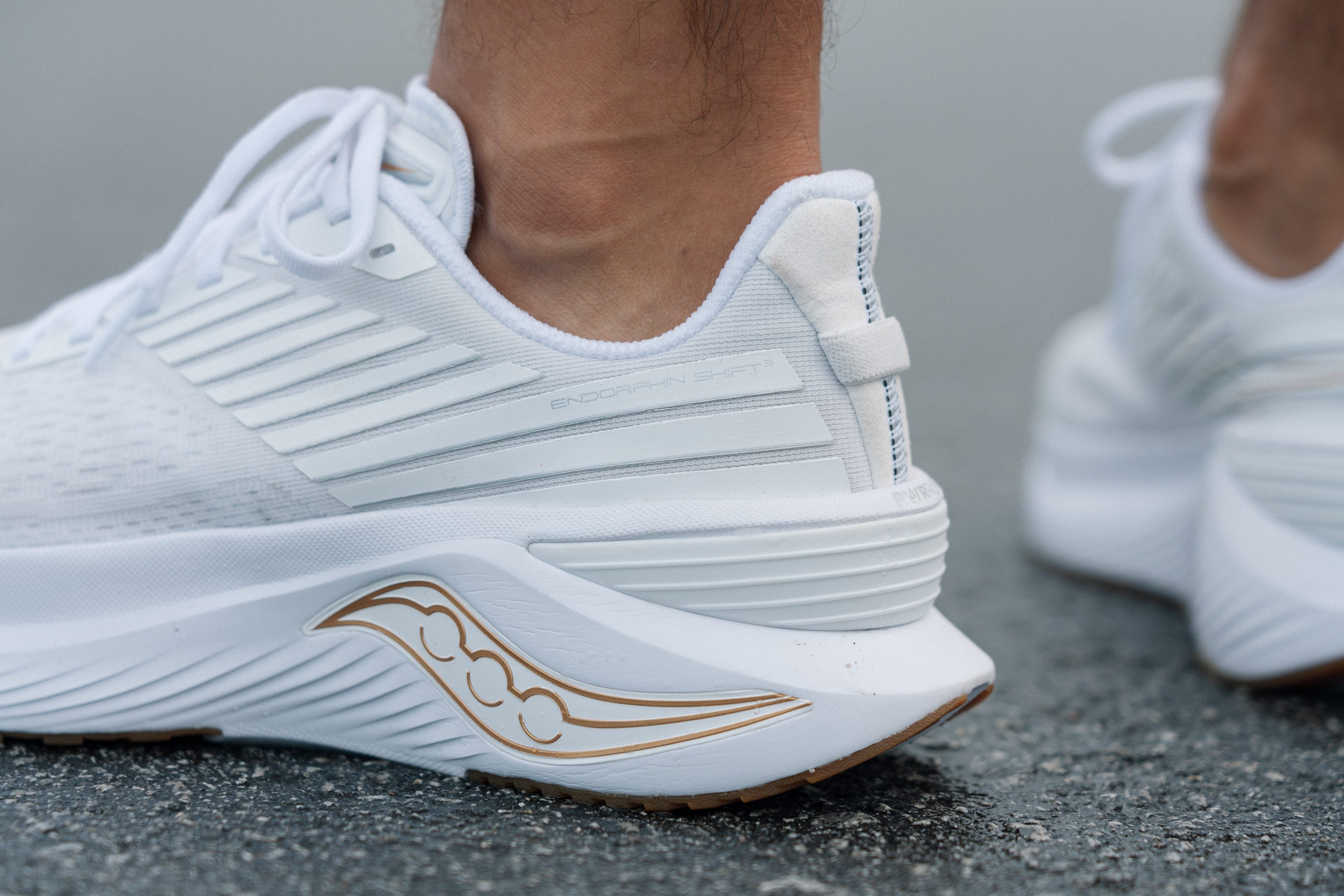
The stability you wouldn’t expect
Despite its height, the shoe feels pretty stable and supportive from heel to toe. We attribute this to the wide platform, and to the sidewalls around the heel and midfoot that combined together work very well. Ultimately, we never felt as though we were trying to balance on a circus ball.
The shoe comes with a nice and wide platform in both the forefoot and the heel. According to our caliper measurement, it is 110.8 mm wide in the forefoot (2 mm narrower than average) and 93 mm in the heel (3 mm WIDER than average).
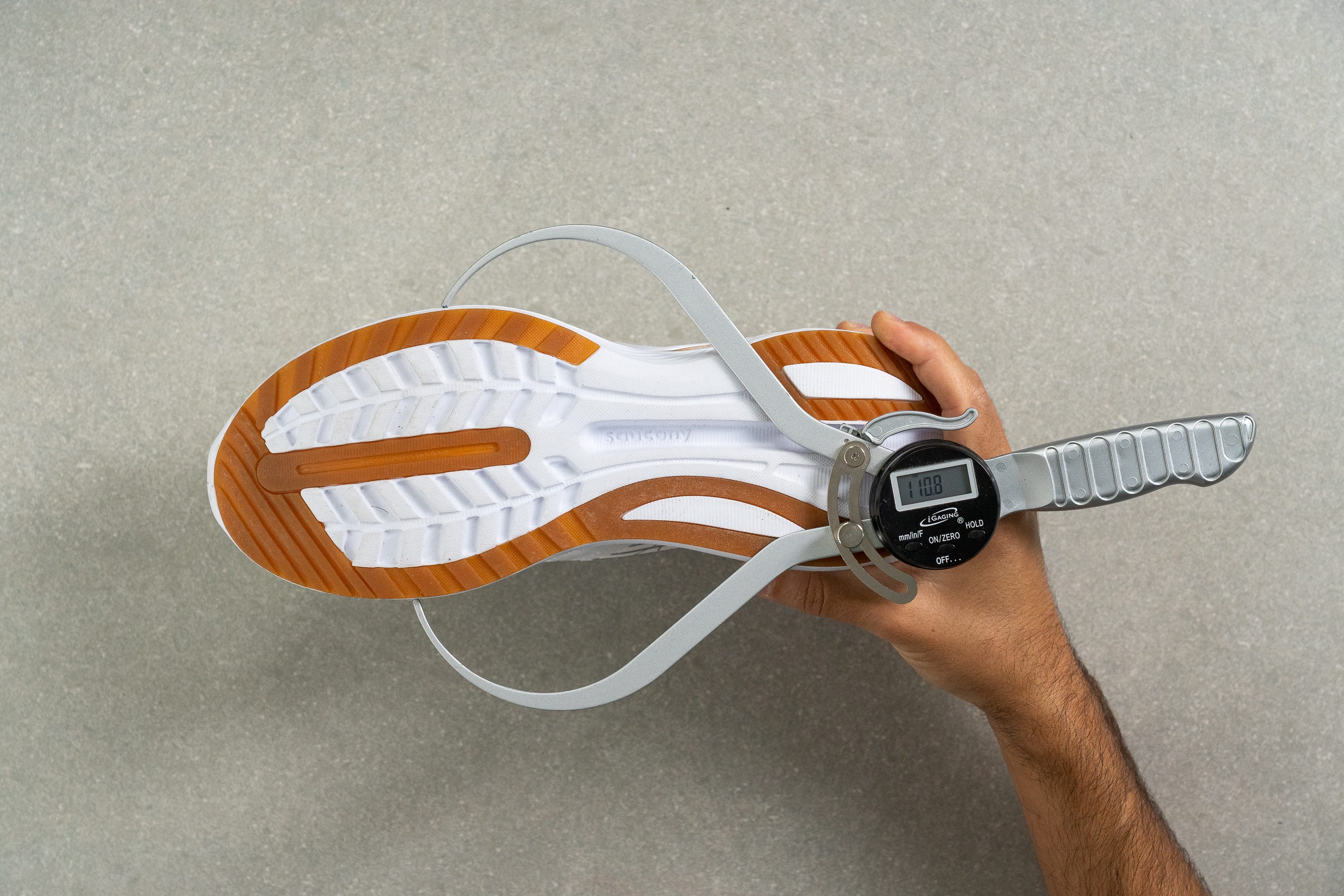
Another contributing factor to stability is how rigid the shoe is when twisted. We assessed the Shift 3's torsional flexibility as 3/5 (where 5 is the stiffest). That makes it moderately stiff.
This is what makes the Endorphin Shift 3 feel quite stable for a neutral shoe.
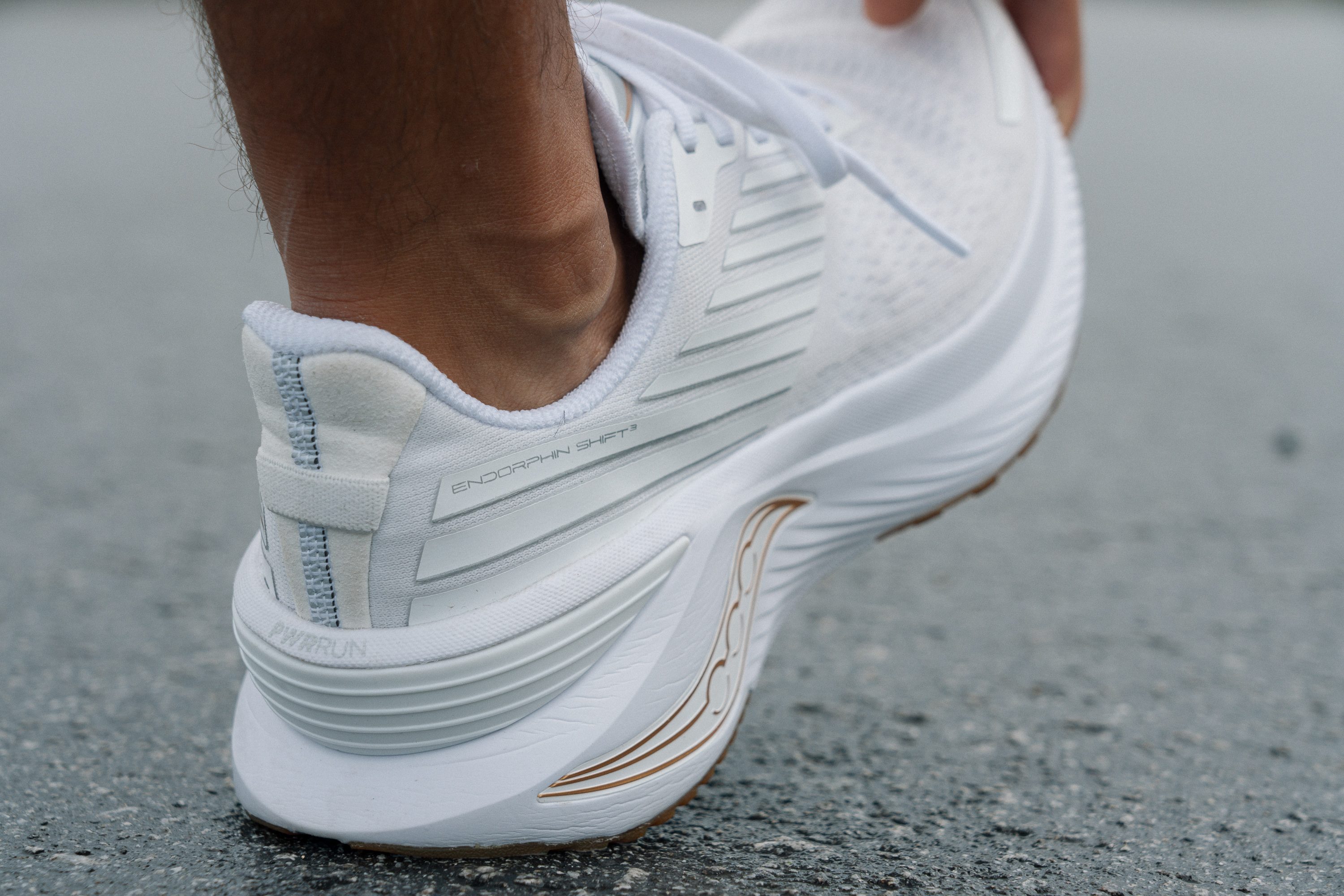
Lacing up is not an issue in the Endorphin Shift 3
We haven't experienced any issues with the shoe's lacing or lockdown. A secure fit is guaranteed in the Endorphin Shift 3.
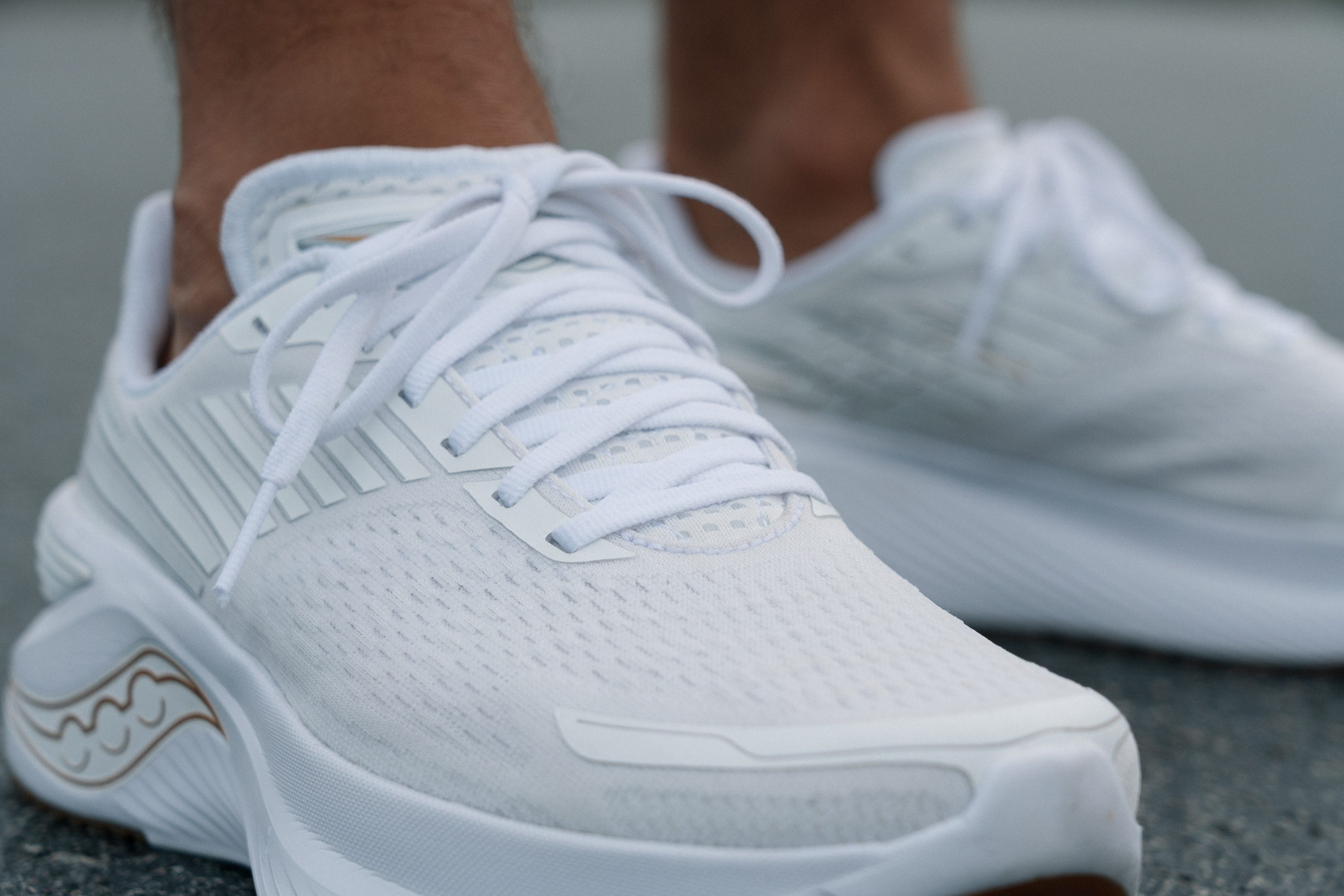
No need to replace it soon
Just like its predecessors, this new Saucony Endorphin shoe is long-lasting, mainly due to the firm rubber on the outsole that does not wear out quickly. After over 30 miles, we can confirm that the wear-resistance of the Shift 3's rubber is top-notch!
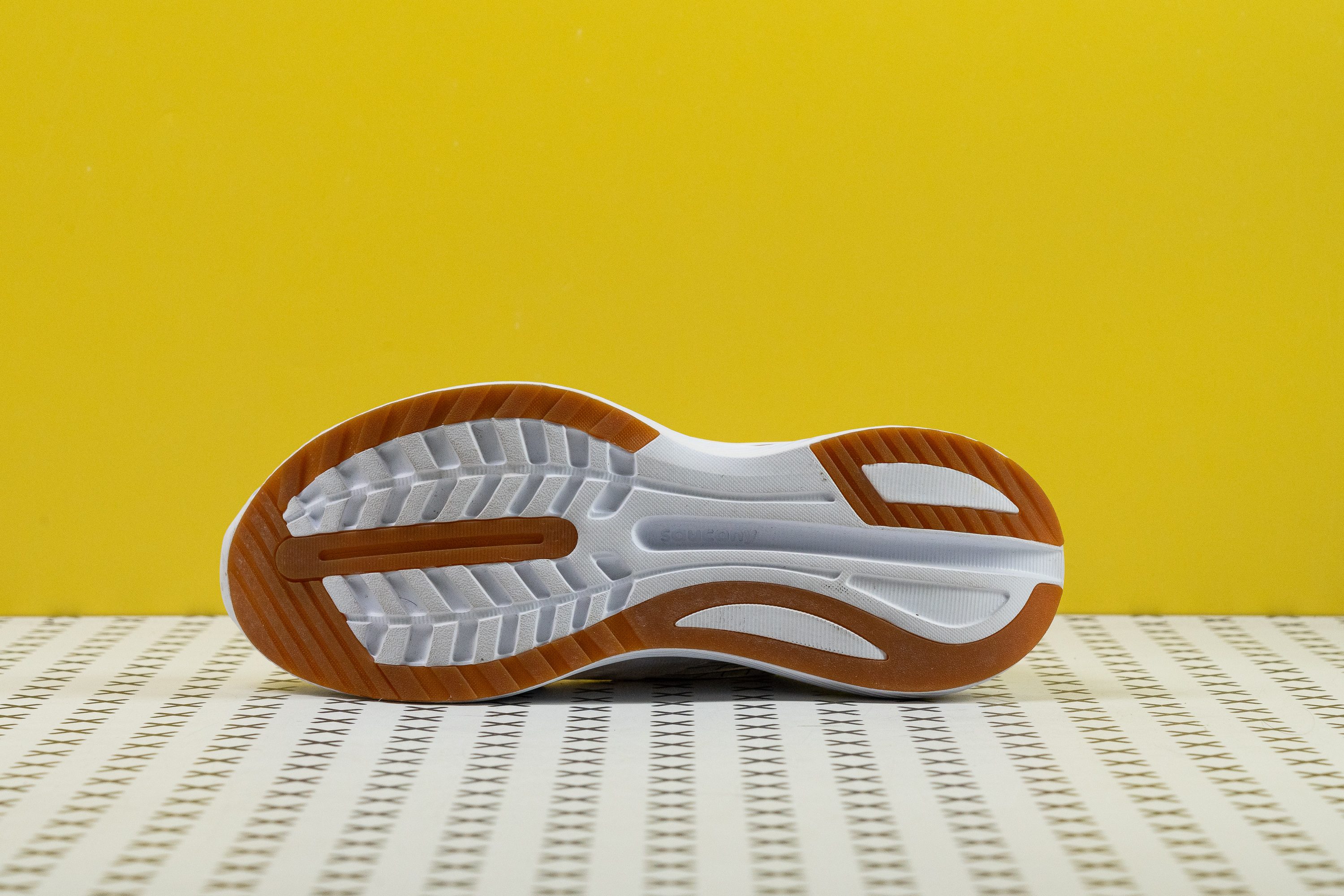
Pricey, yet worth it
At $150 this is clearly not a cheap shoe (the average for a road running shoe is $140), yet considering all of the Shift 3's assets and lack of serious issues, we found the price to be justified.
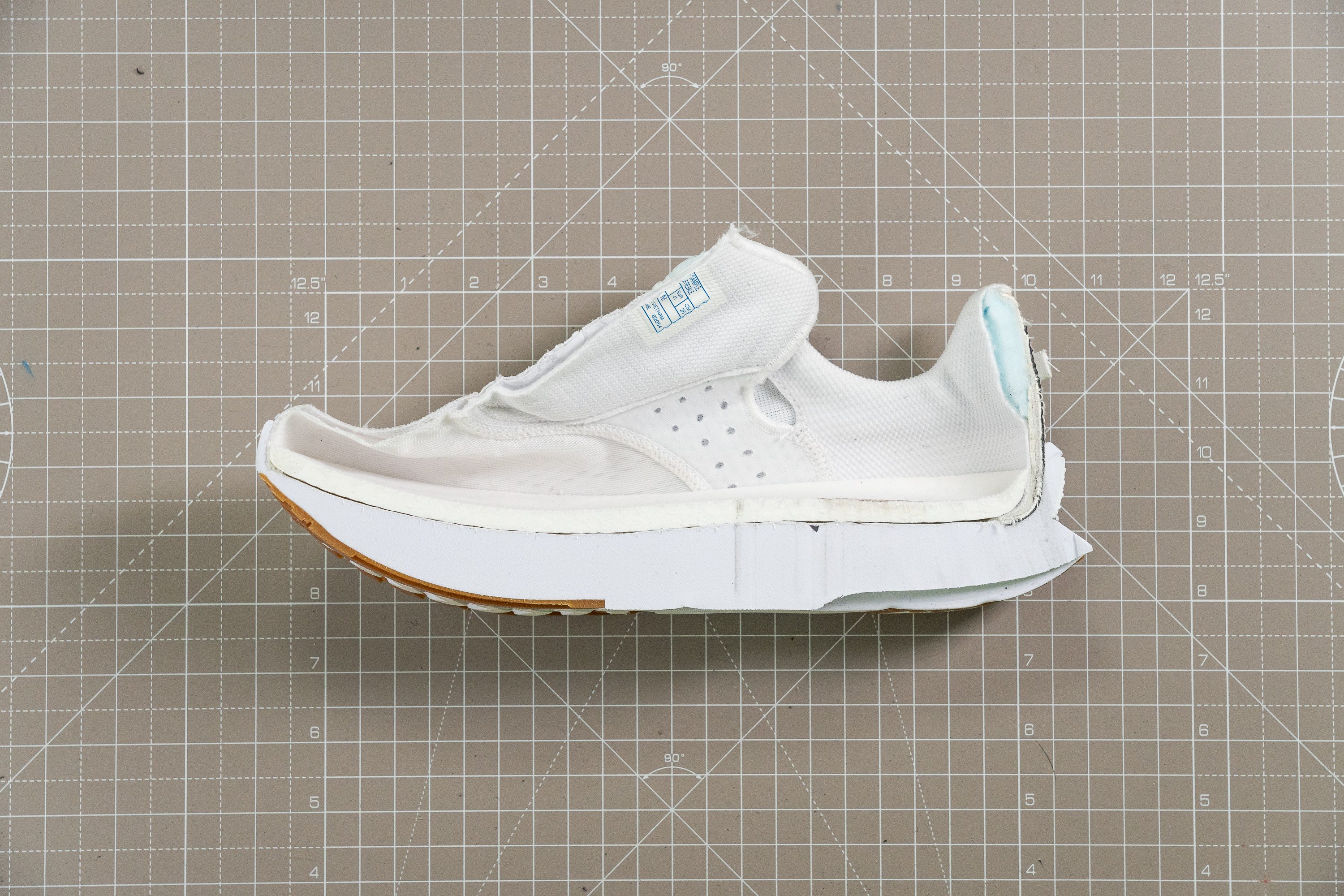
Attractive look
We absolutely loved the variety of colors available for the Shift 3! As you can see from the photos, we preferred the all-white version which looks crisp and clean, much like first snow!
